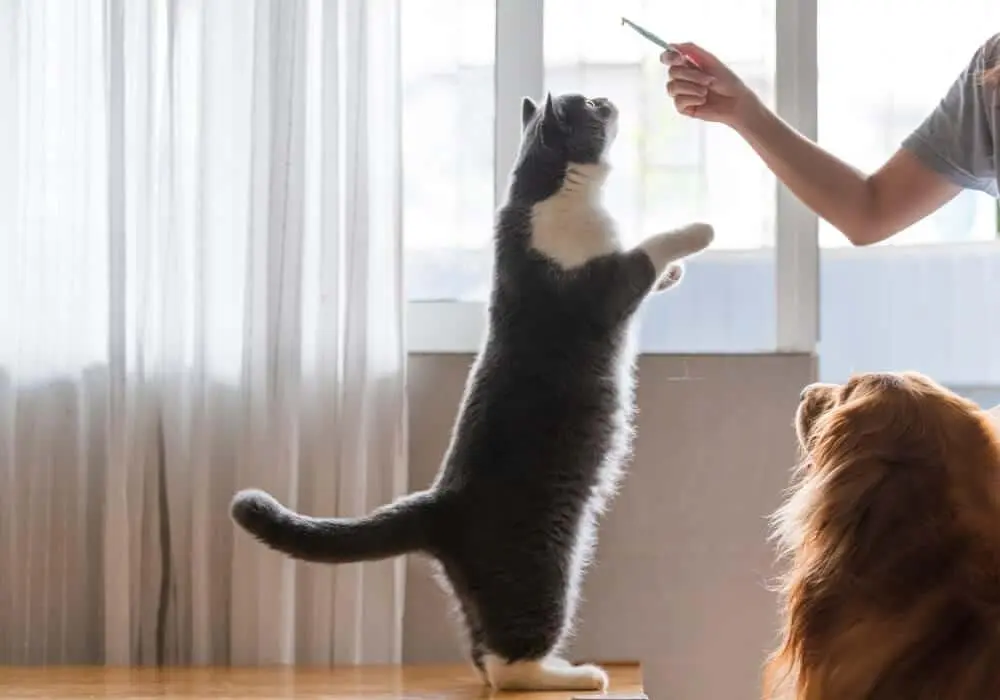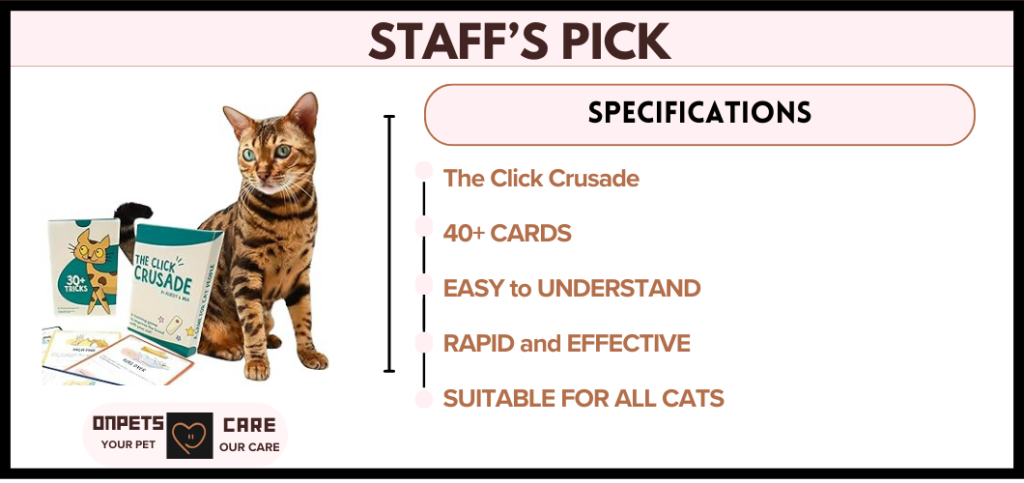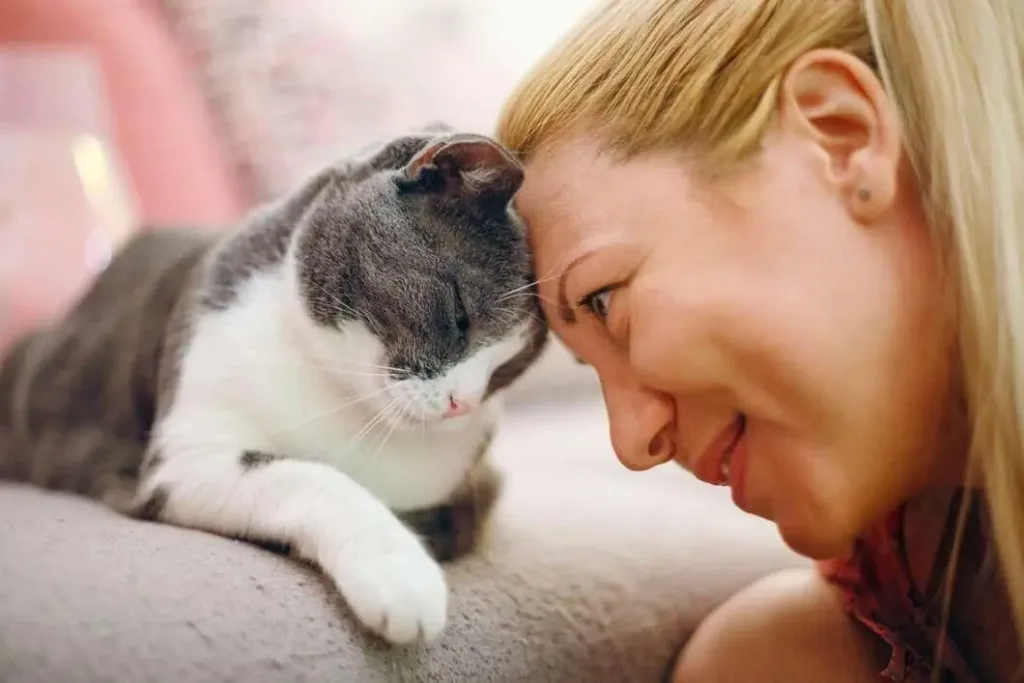10 Tips for the Best Cat Training

Cats are amazing pets, but sometimes they can do things that make living together tricky. With the finest cat training, kitties are able to comprehend our expectations of them, such as utilizing the litter box and refraining from furniture scratching. It’s similar to teaching children household rules so that we can all get along better. Cats enjoy training, too! It gives them things to do and keeps their brains busy, making them happier and less likely to get into trouble. So, spending a little time training our Furry friends can make life better for everyone.
Owning a cat is like having a furry little one around your home. While they’re independent creatures, a little training can go a long way in fostering a good relationship between you and your feline friend. Whether you’re a first-time cat parent or a seasoned cat whisperer, these cat training 10 tips will help you master the art of cat training.
Table of Contents
Importance of Cat Training

Cat training isn’t just about teaching them tricks it’s about building trust and strengthening your bond. When you invest time in training, you’re communicating with your Cat, understanding their needs, and creating a mutual understanding. From scratching furniture to inappropriate litter box use, behavioral issues can strain the cat-owner relationship. Training helps address these issues before they escalate, making your home a happier place for both you and your feline companion.
| Strengthening Bond: | Training fosters communication and mutual respect, strengthening the bond between cats and their owners. |
| Preventing Behavioral Issues: | Training teaches cats appropriate behaviors, preventing issues like scratching furniture or inappropriate litter box use. |
| Mental Stimulation: | Training engages cats’ minds, reducing boredom and promoting mental agility. |
| Ensuring Safety: | Training instills essential skills in cats, keeping them safe from accidents or dangerous situations. |
| Promoting Harmony: | Overall, cat training contributes to a peaceful and enjoyable home environment for both cats and their owners. |
What Do Cats Need for Training?

Cats aren’t as eager to please as dogs, so patience is key. Remember, Rome wasn’t built in a day, and neither is a perfectly trained cat. Take it slow, celebrate small victories, and never lose your cool.
Forget about punishment cats respond much better to positive reinforcement. Whether its treats, toys, or verbal praise, reward your cat when they exhibit the desired behavior to encourage them to do it again.

For training, cats mainly need patience, treats, and a calm environment. Patience is essential because cats learn at their own pace and may need time to understand what we’re teaching them. Treats are great motivators and can be used to reward good behavior, helping cat’s associate training with positive experiences. Creating a calm environment free from distractions also helps cats focus during training sessions. Additionally, using toys or tools like clickers can aid in communication and make the training process smoother. Overall, a combination of patience, positive reinforcement, and a conducive training environment sets cats up for success in learning new behaviors.
Basics of Training Your Cat
Every cat is unique, and their willingness to learn varies. Based on your cat’s personality, age, and prior experiences, set reasonable goals. Your cat won’t start pulling off magic feats overnight.
The key to teaching cats well is consistency. Establish precise guidelines and procedures, then adhere to them scrupulously. Because cats like predictability, they will pick up on things more quickly if you are consistent.
Begin with Basic Instructions:
Give your cat simple orders to start, such “sit” or “come.” To avoid overwhelm, keep sessions brief and upbeat and concentrate on one command at a time.
Employ Positive Reinforcement:
Cats react most favorably to praise for well-behaved conduct. Good incentives to promote desired behaviors include praise, toys, and treats because they strengthen the association between the conduct and the reward.
Be Consistent:
The secret to successful training is consistency. Set up explicit guidelines and procedures, then follow them. Because cats like predictability, it’s important to maintain consistency so they know what’s expected of them.
Timing is everything:
When it comes to cat training, timing is everything. Incentive your cat right away when it exhibits the desired behavior to help them associate the behavior with the incentive. Your cat may become confused by delayed rewards, which will lessen the training’s effectiveness.
Stay Patient and Persistent:
Celebrate little accomplishments along the road and be persistent and patient. Keep in mind that cats learn at their own rate, so during the training process, continue to practice and provide assistance.
How to Train a Cat | 10 Tips

1. Start Early
Training your cat early on sets the stage for success. Kittens are like sponges, soaking up information and adapting quickly to new experiences. By starting training during their formative months, you can establish good habits and behaviors that will stay with them as they grow older. However, if you’re adopting an older cat, don’t fret it’s never too late to teach an old cat new tricks. While it may require a bit more patience and persistence, older cats can still learn and benefit from training sessions.
2. Use Clicker Training
Clicker training transforms our interactions with our feline companions. By teaching goodies to be associated with the sound of a clicker, you can precisely and clearly designate desired behaviors. The click serves as a signal that tells your cat they’ve done something right, making it easier for them to understand which actions earn rewards. Clicker training is not only effective but also fun for both you and your cat, fostering a positive learning experience.
3. Focus on One Behavior at a Time
Trying to tackle too many behaviors at once can overwhelm both you and your cat. Instead, focus on one behavior at a time, whether it’s using the scratching post or responding to a specific cue. By breaking down training into manageable steps, you set your cat up for success and prevent frustration. Once they’ve mastered one skill, you can gradually introduce new behaviors to work on.
4. Keep Training Sessions Short and Sweet
Because cats are known to have short attention spans, training sessions should be engaging and brief. To keep your cat from getting bored or restless, schedule sessions that last between five and ten minutes. Ending on a positive note, such as with a successful repetition of a behavior or a tasty treat, reinforces the training session as a positive experience for your cat.
5. Use Treats Wisely
Treats are a valuable tool in cat training, but it’s essential to use them wisely. Opt for small, tasty treats that your cat loves and reserve them specifically for training sessions. Using treats sparingly helps prevent overfeeding and ensures that your cat remains motivated to work for their rewards. Remember, the goal is to encourage desired behaviors through positive reinforcement, not to create a dependency on treats.
6.Use Clicker Training:
One of the best ways to communicate with your cat is to use clicker training. By associating the clicker’s sound with treats, you can encourage your cat to engage in desired behaviors and facilitate communication between you and them.
7.Make Training Fun:
Training shouldn’t feel like a chore for you or your cat. Keep things light-hearted and fun by incorporating play into your training sessions. Use toys and interactive games to make learning enjoyable for your furry friend.
8. Respect Your Cat’s Limits:
Every cat has their limits, so be mindful of your cat’s comfort level during training. If your cat seems stressed or disinterested, take a break and try again later. Pushing too hard can backfire and make your cat less willing to participate.
9. Don’t Punish Bad Behavior:
Punishment has no place in cat training and can damage the bond between you and your cat. Instead of punishing bad behavior, redirect your cat’s attention to something more appropriate and reward them when they comply with your requests.
10. End on a Positive Note:
Always end training sessions on a positive note, even if progress is slow. Leave your cat feeling confident and accomplished, so they’ll be eager to participate in future sessions. You’ll be astounded at what you and your cat can accomplish via training if you have patience, consistency, and a little bit of fun.
Conclusion
Cat training is a rewarding journey that strengthens the bond between you and your furry friend. By following these 10 tips and approaching training with patience, consistency, and positivity, you’ll unleash the perfection in your cat and create a harmonious home where both of you can thrive. So, grab your clicker, stock up on treats, and get ready to embark on an adventure filled with fun, learning, and plenty of purrs. Happy training!
FAQs:
Are cats easy to train?
Cats can be trained, but it requires patience and consistency. They respond well to positive reinforcement techniques like treats and play.
Do cats know their names?
Yes, cats can learn their names and respond to them, although some may choose to ignore you at times. Consistent use of their name with positive reinforcement can help.
Is it OK to spray a cat with water?
It’s not recommended as it can cause stress and damage trust. Positive reinforcement is more effective for correcting behavior.
Do cats have a favorite person?
Cats may develop strong bonds with certain people based on their interactions and care received. However, preferences vary among cats.
What is a cat’s favorite food?
Preferences vary among cats, but many enjoy protein-rich foods like chicken, tuna, or salmon. It’s best to offer a balanced diet approved by a veterinarian.






Leave a Reply